Description
ACTIONS:
Loratadine is a potent long-acting tricyclic antihistamine with selective peripheral H1-receptor antagonistic activity. Pseudoephedrine hydrochloride, one of the naturally occurring alkaloids of Ephedra and an orally administered vasoconstrictor, produces a gradual but sustained decongestant effect facilitating shrinkage of congested mucosa in upper respiratory areas. The mucosa membrane of the respiratory tract is decongested through the action on the sympathetic nerves.
INDICATIONS AND USAGE:
Decongess-L capsules are indicated for the relief of symptoms associated with allergic rhinitis and the common cold Including nasal congestion, sneezing, rhinorhea, pruritus and lacrimation. Decongess-L capsules are recommended when both the antihistaminic properties of loratadine and the decongestant effect of pseudoephedrine hydrochloride are desired.
DOSAGE AND ADMINISTRATION:
Adults and Children 12 years of age and over: One Decongess-L capsules twice a day
DRUG INTERACTIONS:
When administered concomitantly with alcohol, loratadine has no potentiating effect as measured by psychomotor performance studies.
Increase in plasma concentrations of loratadine have been reported after concomitant use with ketoconazole, erythromycin or cimetidine in controlled clinical trials, but without clinically significant changes (including electrocardiographic).Other drugs known to inhibit hepatic metabolism should be coadministered with caution until definitive interaction studies can be completed.
When sympathomimetics are given to patients receiving monoamine oxidase (MAO) inhibitors, hypertensive reactions, including hypertensive crises may occur. The antihypertensive effects of methyldopa mecamylamine, reserpine and veratrum alkaloids may be reduced by sympathomimetics. Beta-adrenergic blocking agents may also interact with sympathomimetics. Increased ectopic pacemaker activity can occur when pseudoephedrine is used concomitantly with digitalis. Antacitds increase the rate of pseudoephedrine absorption; kaolin decreases it.
Drug/Laboratory Test Interactions: Antihistamines should be discontinued approximately 48 hours prior to skin testing procedures since these drugs may prevent or diminish otherwise positive reactions to dermal reactivity indicators. The in vitro addition of pseudoephedrine to sera containing the cardiac isoenzyme MB of serum creatine phosphokinase progressively inhibits the activity of the enzyme. The inhibition becomes complete over six hours.
ADVERSE REACTIONS:
During controlled clinical studies with the recommended dosage, the incidence of adverse effects associated with Clarinase repetabs tablets was comparable to that of placebo. With the exception of insomnia and dry mouth, both of which were commonly reported. Other reported adverse reactions associated with both Clarinase repetabs tablets and placebo included headache and somnolence
Rare adverse reactions in decreasing order of frequency included nervousness, dizziness, fatigue, nausea, abdominal distress, anorexia, thirst, tachycardia, pharyngitis, rhinitis, acne, pruritus, rash, urticaria, arthralgia, confusion, dysphonia, hyperkinesia, hypoesthesia, decreased libido, paresthesia, tremor, vertigo, flushing. postural hypotension, increased sweating, eye disorders, earache, tinnitus, taste abnormality, agitation, apathy, depression, euphoria, paroneiria, increased appetite, change in bowel habits, dyspepsia, eructation, hemorrhoids, tongue discoloration, tongue disorder, vomiting, transient abnormal hepatic function dehydration, increases weight, hypertension, palpitation, migraine, bronchospasm, coughing, dyspnea, epistaxis, nasal congestion, sneezing, nasal irritation, dysuria, micturition disorder, nocturia, polyuria, urinary retention, asthenia, back pain, leg cramps, malaise and rigors.
During the marketing of loratadine, alopecia, anaphylaxis, and abnormal hepatic function have been reported rarely.
CONTRAINDICATIONS:
Decongess-L capsules are contraindicated in those who have shown sensitivity or idiosyncrasy to their components to adrenergic agents or other drugs of similar chemical structure. Decongess-L capsules also are contraindicated in patients receiving MAO inhibitor therapy, or Within fourteen days of discontinuing such treatment, and in patients with narrow angle glaucoma, urinary retention, severe hypertension, severe coronary artery disease and hyperthyroidism.
PRECAUTIONS:
Sympathomimetics should be used with caution in patients with glaucoma, stenosing peptic ulcer, pyloroduodenal obstruction, prostatic hypertrophy or bladder neck obstruction, cardiovascular disease, increased intraocular pressure or diabetes mellitus. Sympathomimetics should be used with caution in patients receiving digitalis. Sympathomimetics may cause central nervous system (CNS) stimulation, excitability, convulsions, and/or cardiovascular collapse With accompanying hypotension. Patient 60 year of age are more likely to have adverse reactions to sympathomimetics amines (such as pseudoephedrine). Consequently, caution should be exercised when administering a repeat action formulation to elderly patients. Patients with severe liver impairment should be administered a lower initial dose because they may have reduced clearance of loratadine; an initial dose of one capsule daily is recommended.
Drug Abuse and Dependence; There are no data available to indicate that abuse or dependency occurs with loratadine or pseudoephedrine hydrochloride, like other CNS stimulants, has been abused. At high doses subjects commonly experience an elevation of mood, decreased appetite and a sense of increased physical energy, mental capacity and alertness. Anxiety, irritability and loquacity also have been experienced. With continued use, tolerance develops, the user increases the dose and ultimately toxicity occurs. Depression may follow rapid withdrawal
PEDIATRIC USAGE:
Safety and efficacy of Decongess-L capsules in children younger than 12 years of age have not yet been established.
USAGE DURING PREGNANCY AND IN NURSING MOTHERS:
Safe use of Decongess-L capsules during pregnancy has not been established. Therefore, the product should be used only if the potential benefit justifies the potential risk to the fetus.
Since loratadine and pseudoephedrine hydrochloride are excreted in breast milk. A decision should be made whether to discontinue nursing or to discontinue the use of this product.
OVERDOSAGE INFORMATION:
In the event of overdosage, general symptomatic and supportive treatment should be started immediately and maintained for as long as necessary.
Manifestations: They may vary from CNS depression (sedation, apnea, diminished mental alertness, cyanosis, coma, cardiovascular collapse) to stimulation (insomnia, hallucination, tremors or convulsions) to death. Other signs and symptoms may be euphoria, excitement tachycardia, palpitations, thirst, perspiration, nausea, dizziness, tinnitus, ataxia, blurred vision and hypertension or hypotension. Stimulation is particularly likely in children, as are atropine-like signs and symptoms (dry mouth, fixed dilated pupils; flushing; hyperthermia, and gastrointestinal symptoms). In large doses sympathomimetics may give rise to giddiness, headache, nausea, vomiting, sweating, thirst, tachycardia, precordial pain, palpitations, difficulty in micturition, muscular weakness and tenseness, anxiety, restlessness and insomnia. Many patients can present a toxic psychosis with delusions and hallucinations. Some may develop cardiac arrhythmias, circulatory collapse, convulsions, coma and respiratory failure. The Oral LD50 values for this combination product were greater than 525 and 1839 mg/kg in mice and rats respectively.
Treatment: Consider standard measures to remove any unabsorbed drug in the stomach, such as adsorption by activated charcoal administered as a slurry with water. The administration of gastric lavage should be considered. Physiologic saline solution is the lavage solution of choice, particularly in children. In adults, tap water can be used; however as much as possible of the amount administered should be removed before the next instillation. Saline cathartics draw water into the bowel by osmosis and, therefore may be valuable for their action in rapid dilution of bowel content After emergency treatment, the patient should continue to be medically monitored. Treatment of the signs and symptoms of overdosage is symptomatic and supportive. Stimulants barbiturates, diazepam or paraldehyde may be administered to control seizures. Hyperpyrexia especially in children may require treatment with tepid water sponge baths or hypothermic blanket. Apnea is treated with ventilatory support.
HOW SUPPLIED:
Decongess-L capsules are supplied in carton box containing 14 capsules in 2 (PVC/Aluminium) strips and a pamphlet.
STORAGE:
Store at a temperature not exceeding 30C in dry place.
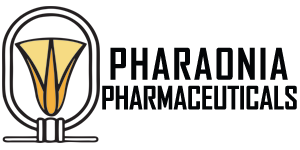

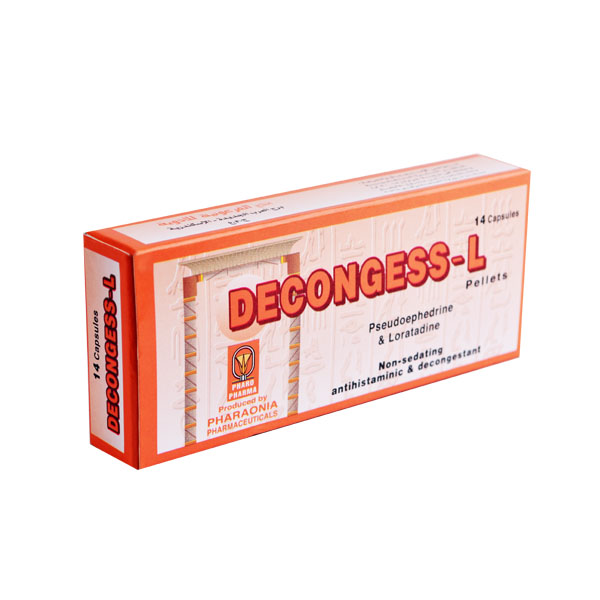
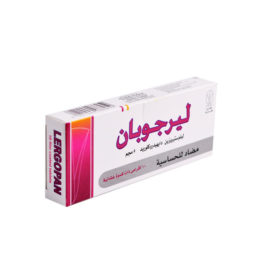
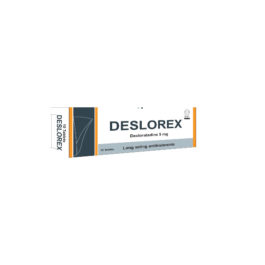
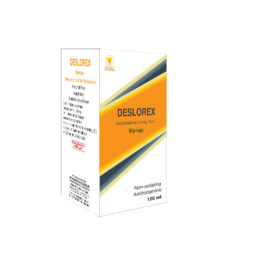
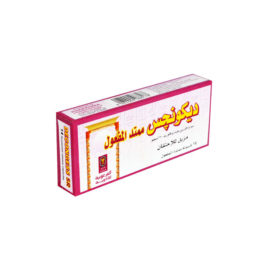
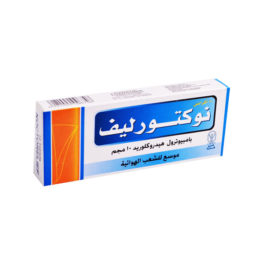
Reviews
There are no reviews yet.